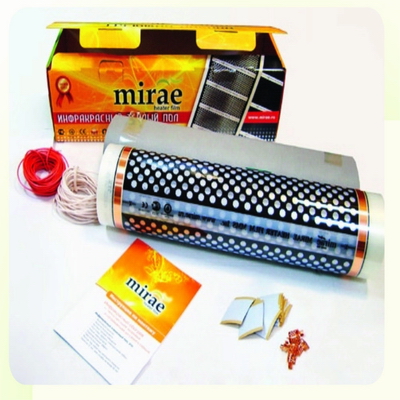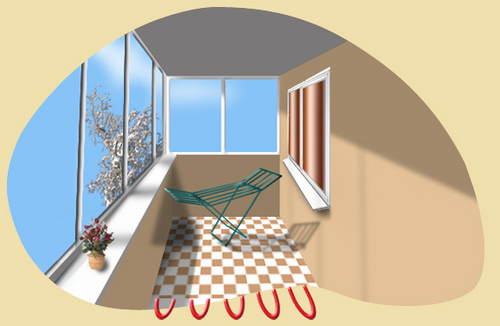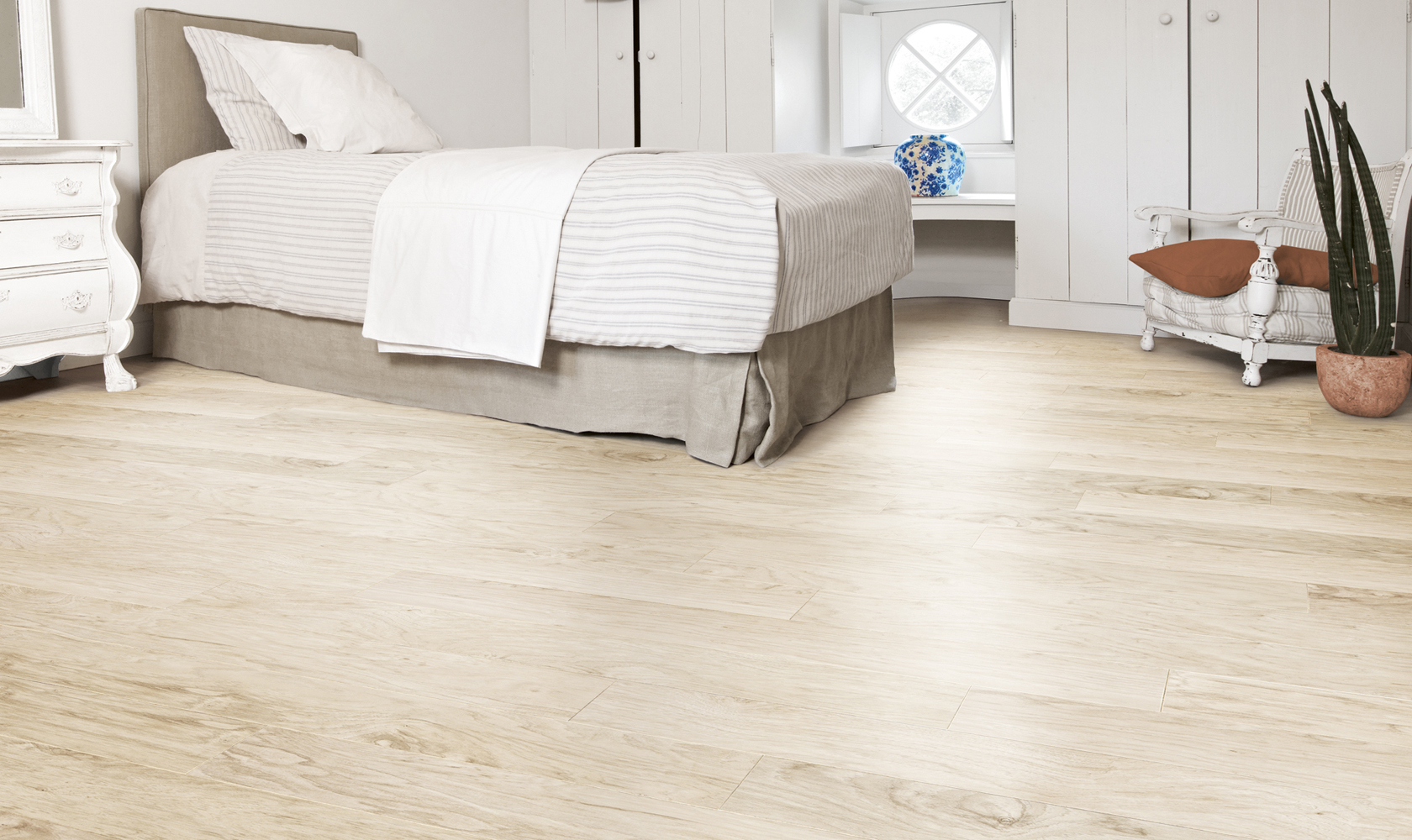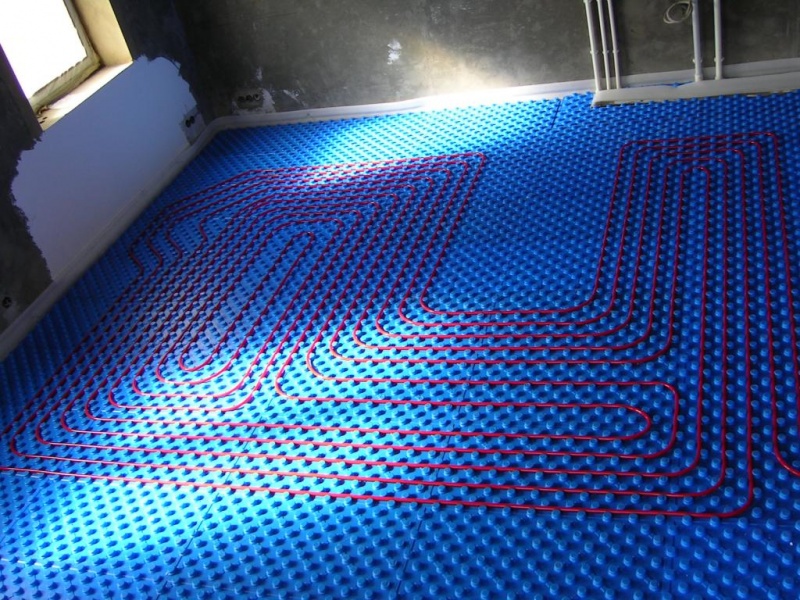Installation of underfloor heating under linoleum: rules for installing an infrared system
There are several ways to arrange a warm floor in a room. Installation technologies for water and electric cable underfloor heating are associated with the need to pour a cement-sand screed. You can do without wet work, if you choose a method of floor heating, based on the use of infrared thermal film. What underfloor heating under linoleum is better to choose from the listed options? Of course, the last one. Because the film infrared floor allows you to provide the optimal temperature regime suitable for this floor covering.
Why infrared film?
To ensure smooth and uniform heating, and this is exactly what linoleum requires, it is necessary to select a floor heating power of not more than 150 W per square meter. At such a power level, a lot of unpleasant moments can be avoided during floor heating, which can negatively affect the decorative and functional qualities of the PVC coating. With more intense heating, linoleum can:
- lag behind the base due to expansion, in other words, "swell";
- change color in the place of strong heating;
- start releasing harmful substances in large volumes, such as phenol;
- soften and break easier.

A detailed review of the film infrared film underfloor heating system is presented in the material on our website:https://floor.expertexpro.com/en/tepliy-pol/plenochnyj-infrakrasnyj-teplyj-pol.html.
For the correct calculation and proper installation of an electric floor heating using infrared film it is better to attract a professional electrician. All other work on preparing the base and laying linoleum can be done with your own hands, and all the work will not take much time.
About various types of temperature controllers for an electric floor heating is described in the article:https://floor.expertexpro.com/en/tepliy-pol/termoregulyator-dlya-teplogo-pola.html.
We select materials for installation
Here is what we need for work:
- infrared thermal film (in accordance with the size of the insulated area calculate the desired number of linear meters);
- special contact clamps and insulation;
- temperature regulators in an amount corresponding to the number of rooms;
- floor temperature sensors (as many as thermostats are needed);
- wiring;
- heat-reflecting material, which can be selected as isolon, penotherm, infraflex;
- double-sided and regular tape;
- Fiberboard or other similar building materials.
Important! Under linoleum, heat-reflecting material with a soft layer is laid. It is forbidden to use materials made on the basis of aluminum foil.
Features of installation and stages of work
We present to your attention a work order painted in detail:
- Determine the location of the thermostats and heating film.
- Thoroughly clean the floor surface, if necessary, level it.
- Lay the heat-reflecting material over the entire area of the room, while using adhesive tape, fasten the canvas together.
- Cut the thermal film into several separate strips of the desired length, while paying attention to the marked cut lines. The size of the stripes can vary from 17 cm to 8 meters. To reduce other materials used, it is necessary to strive to find the option of laying strips of maximum length.
- Lay the pieces of thermal film on a layer of heat-reflecting material, always with a copper strip down. Ensure tight contact between the heating film and the heat reflector, avoiding the formation of air gaps. Place pieces of thermal film close together to ensure uniform floor heating.
- Install the contact clamp on the copper conductive strip of the thermal film and clamp it with pliers or pliers.
- Insulate with bituminous insulation the cut-off lines of the copper bus that opened when cut into pieces of infrared film. Insulate the silver contacts that connect the copper busbar to the graphite heating strips.
- Fasten the thermal film with adhesive tape, thereby eliminating the possibility of its displacement on the surface of the heat-reflecting material.
- Install a thermostat on the wall, while ensuring free access to the installation site. Choose a place higher if there are young children in the house.
- Route the connecting wires under the baseboard along one side of the room. The wire running along the wall is hidden in a prepared shtroba or masked with a decorative plastic box.
- Route the bare ends of the wires into the contact clamps, securing them with pliers or pliers. Be sure to check the fastening.
- Insulate all the places where the wires connect to the thermal film.
- Connect the connecting wires to the thermostat, while following the installation rules of this device. Also study the wiring diagram.
- Install a temperature sensor under the heating film near the wall and connect it to the thermostat.
- Connect the thermostat to the mains. This operation can be done by a qualified electrician. If you are not, then invite a specialist.
- Test the heating system. At the same time, check the degree of heating of each individual strip. Using a screwdriver indicator, all insulation points are checked.
- After successful testing, lay the plastic wrap. Seat the docking of her panels with tape.
- Install the base from the fiberboard, on which lay the linoleum.
- Set the thermostat at a level of 27-28 degrees and turn on the floor heating system.
Here is an example of performing work on a video:
Electric underfloor heating can be done not only in the living room, but also on the balcony or loggia. You can find out about possible options here:https://floor.expertexpro.com/en/tepliy-pol/teplyj-pol-na-balkone.html.
Safety rules
When starting to lay a warm floor system under linoleum, do not ignore common truths and adhere to safety rules:
- Installation of temperature controllers is possible only after turning off the power supply voltage.
- You can not turn on the warm floor without checking the reliability of the entire insulation.
- It is forbidden to set a value in excess of 30 degrees on the thermostat.
- It is not allowed to superimpose thermal film strips on each other, as this will lead to their overheating and complete failure.
As you can see, the infrared film under the linoleum fits quite quickly. If desired and with little experience, you can do all the work yourself. However, the help of an experienced electrician may still be needed. After all, then there will be no doubt in the correctness of the installation. Warm floors from a dream will turn into reality. It's time to act!



